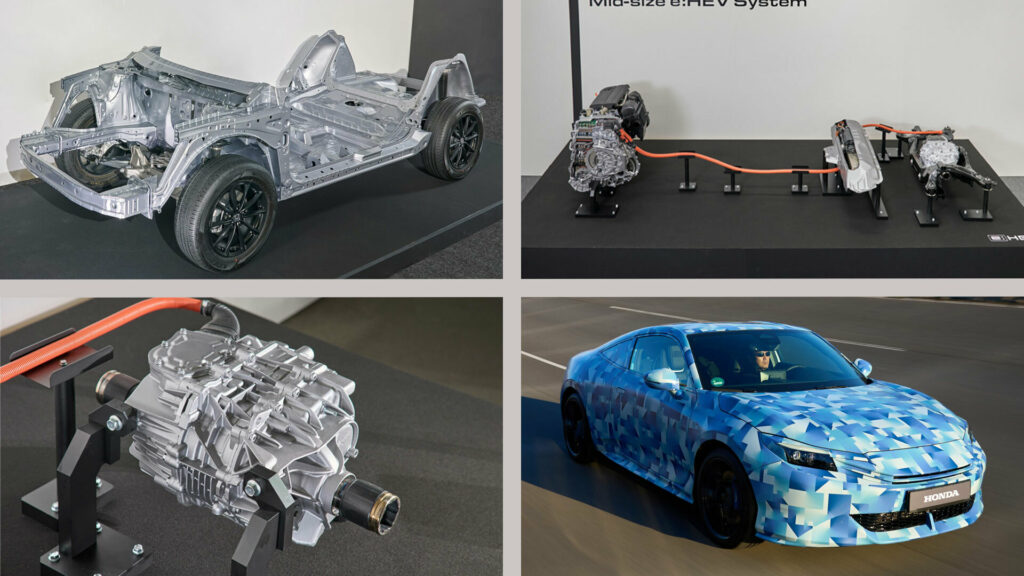- Honda has revealed initial details about their next-generation hybrid system.
- It will use 1.5- and 2.0-liter engines as well as a smaller and more efficient drive unit.
- Hybrids based on the upcoming mid-size platform could be up to 10% more fuel efficient than their predecessors.
Honda has released the first details about their next-generation hybrid system. It combines all-new 1.5- and 2.0-liter direct-injection Atkinson cycle engines with a new front drive unit and an integrated cooling system.
Honda says that when paired to their next-generation mid-size platform, which is currently under development, drivers can expect a more than 10% improvement in fuel efficiency. The company went on to say the new 1.5-liter engine will have a “significant improvement in fuel economy by expanding the range where engine RPM becomes highly efficient in balance with engine torque, by more than 40% compared to the current 1.5-liter engine for the e:HEV system.”
More: Honda Prelude Coming To US In Late 2025 With Simulated Gear Shifts
Furthermore, we can expect smaller and more efficient drive units with more commonality between small- and mid-size systems. The latter effort promises to reduce costs “significantly.”
The various drive modes of the hybrid powertrains have also been tweaked for improved performance and efficiency. As a result, we can expect “excellent power output and fuel economy.”

As mentioned earlier today, all future hybrids are slated to have a new S+ Shift system that “precisely controls … engine RPM during acceleration and deceleration to realize direct drive response and sharp gear shifting.” The system also attempts to “stimulate all of the driver’s senses” by “enhancing engine sound quality” via the audio system. While it’s phony-baloney, Honda said the system amplifies the “sense of oneness between the driver and the vehicle.”
S+ Shift debuts on the Prelude next year and it has an improved linear shift control logic. We can also expect better responsiveness and fake gear shifts as Honda apparently believes an experience is more important than reality.
Electric All-Wheel Drive
Next-generation hybrids will offer a new electric all-wheel drive unit that can be shared with EVs. This should reduce costs and complexity, while also improving performance in adverse conditions.
Getting back to the new mid-size platform, Honda said it features “new body rigidity management” to reduce weight. There will also be a new “steering stability index, which provides the ability to flex the vehicle body to control load on each tire during cornering.” These improvements will be accompanied by a simplified body structure, which promises to reduce weight by up to 10% compared to current hybrids.
This could result in weight savings of around 198 lbs (90 kg) as Honda is “striving to develop the lightest platform in its class.” Honda went on to say the modular platform will have a “commonality ratio of more than 60% among all models” based on the architecture.
Cost Reduction Goals
Perhaps most importantly, Honda claims it aims to cut the cost of its next-generation hybrid-electric vehicles by up to 50%, comparing the model set for launch in 2027 to a similar version introduced back in 2018.
Honda is aiming to sell 1.3 million hybrids annually by 2030, but the company still plans to go zero-emission by 2040. This means hybrids are for the here and now, while EVs are for the mid- to long-term.






























































